Shades of Vegetable Gardens: Growing Edibles in Less Sun
Yes, you really can plant a vegetable garden in the shade — and Shawna Coronado has the goods to prove it. Three years ago she ripped out all of the grass in her shady suburban Chicago backyard and replaced it with raised beds of salad greens, herbs and a surprising cornucopia of other edible goodies.
Between her shady backyard and her front-yard vegetable garden, she now grows enough organic herbs and veggies to put food on the table — and still manages to have enough left over to donate a whopping 125 pounds of vegetables to her local food pantry each year!
If you want to create positive change in the world, your own backyard is the best place to start. Here I'll share what vegetables are thriving in her shady garden. Is there a shady spot in your yard you could start prepping for the next planting season?
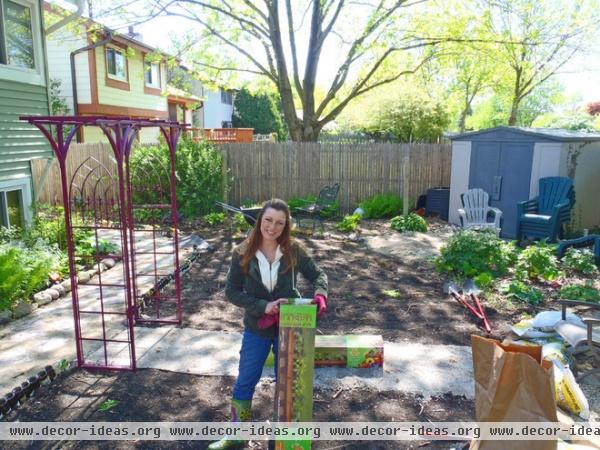
You needn't sacrifice style if you're intent on feeding a family out of your backyard — Coronado illustrates that wonderfully with a pleasing layout of raised beds and paths, an outdoor seating area for entertaining, and a cohesive and colorful palette of both edibles and ornamentals.
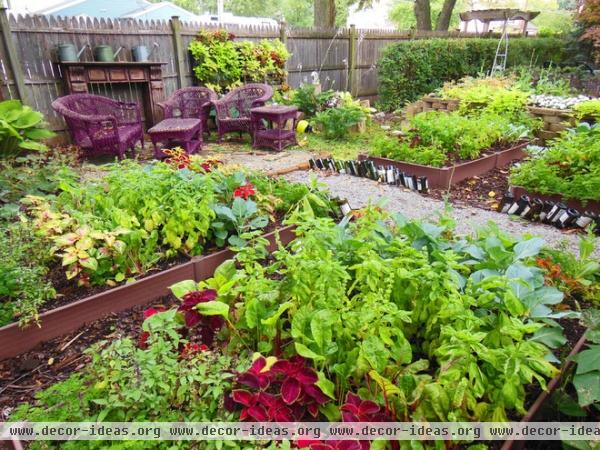
The blue-green hues of jurassic kale (Brassica oleracea, annual) and hostas (Hosta cvs) add depth, while red leaf lettuce (Lactuca sativa, annual) and coleus (Solenostemon scutellarioides, annual) bring welcome splashes of color.
Playful touches like vertical pallet gardens, wine bottle edging and a faux fireplace make it clear that the only thing this gardener takes seriously is having fun.
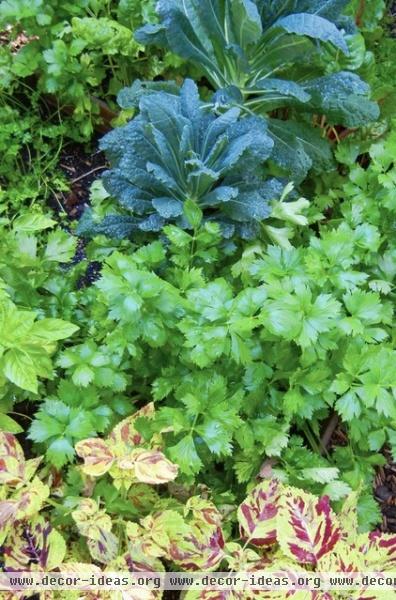
Vegetables and Herbs That Grow in Shade
"No fruits and no roots" is Coronado's rule of thumb for choosing edibles that will produce well in shade, but she quickly points out that even root-forming vegetables like beets or radishes will still produce lots of leafy and edible growth.
Many of the vegetables require only two to three hours of direct light, provided by the dappled sun that filters through the overhanging trees. Among her biggest successes in this garden are basil (Ocimum basilicum, annual), celery (Apium graveolens var. dulce) and dinosaur kale (Brassica oleracea 'Lacinato', annual).
Other good candidates for a shaded vegetable garden include legumes, such as peas (Pisum sativum, annual) and beans (Phaseolus spp); stem veggies, like celery (Apium graveolens, annual) and rhubarb (Rheum rhabarbarum, zones 2 to 8); and most greens. Bok choy (Brassica rapa chinensis, annual), collard greens (Brassica oleracea species, annual), mustard greens (Brassica juncea, annual), Swiss chard (Beta vulgaris, annual) and arugula (Eruca sativa, annual) will all flourish in shade and provide a veritable salad bar of flavor.
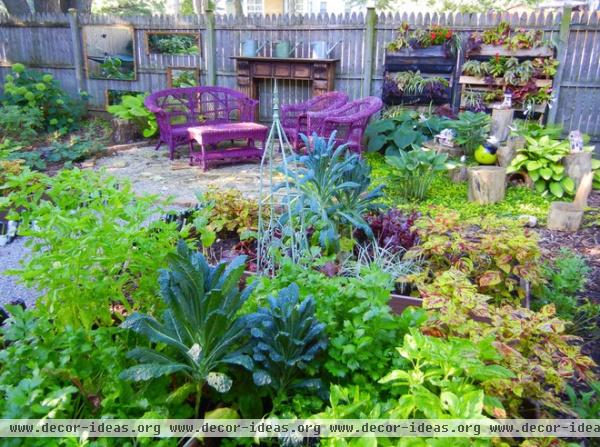
Many leafy herbs will also do well in the shade. Chives (Allium schoenoprasum, annual), mint (Mentha species, annual or perennial in zones 5 to 10), lemon balm (Melissa officianalis, annual or perennial in zones 8 to 10), oregano (Origanum vulgare, annual) and scallions (Allium fistulosum, annual or perennial in zones 7 to 10) are all good bets. In fact, mint and lemon balm actually need a little shade in warmer areas of the south. Speaking of warmer areas, ginger (Zingiber officinale, zones 9 to 11), turmeric (Curcuma longa, zones 8 to 11) and lemongrass (Cymbopogon citratus, zones 9 to 11) all do well in the shade and can be overwintered indoors outside of their zones.
Coronado also recommends incorporating shade-loving perennials and annuals into your shady vegetable garden, such as begonias (Begonia species, zones vary), New Guinea impatiens (Impatiens 'New Guinea', annual), Heuchera (Heuchera cvs, zones 4 to 9) and Jack Frost Brunnera (Brunnera macrophylla 'Jack Frost', zones 3 to 8). Not that vegetables really need much help in the ornamental department, but if you have limited space, it's nice to know you have options.
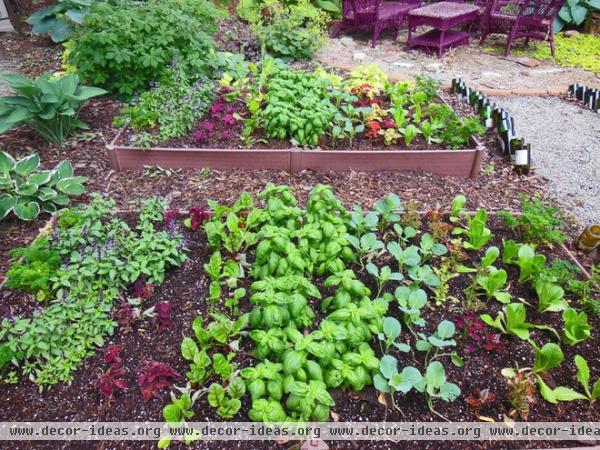
Raised beds, like these by Greenland Gardener in Coronado's garden, are especially useful in a shady garden, since the wandering roots of surrounding trees can make it difficult to cultivate the soil. Mulch and gravel were used to create permeable pathways that allow water to reach the roots of the vegetables rather than draining away and going to waste. To keep her beds healthy, Coronado adds compost to the beds every year and rotates her crops the fun way: by incorporating new ornamental patterns each time she plants.
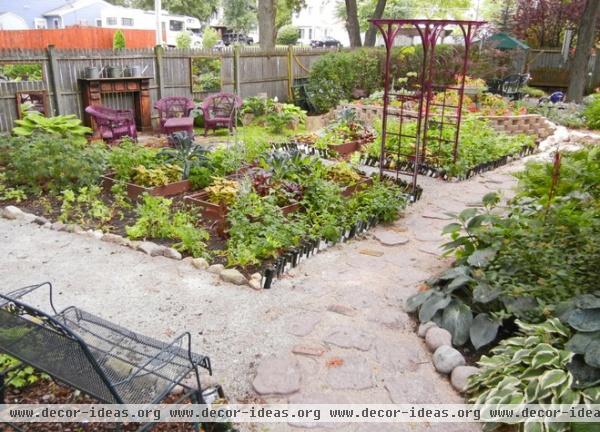
How to Get More Light
Though this garden is considered shady, since it receives very little direct light, the tall overhanging trees still let in more filtered light than you would receive in the shadow of a building or an evergreen tree. The point of this ideabook is to show that you don't need a whole lot of sun to grow vegetables, but your own property might be downright gloomy, to say the least.
If your garden still gets too little light for even the most shade-tolerant vegetables, just take away some of the shade. Remove limbs from congested small trees, hire an arborist to remove limbs from larger ones and, if all else fails, consider removing any unhealthy or brittle "trash" trees that might otherwise fall prey to disease or storms. Some trees (such as magnolias) produce much more shade than others and make gardening all but impossible under their dense and forbidding shadow.
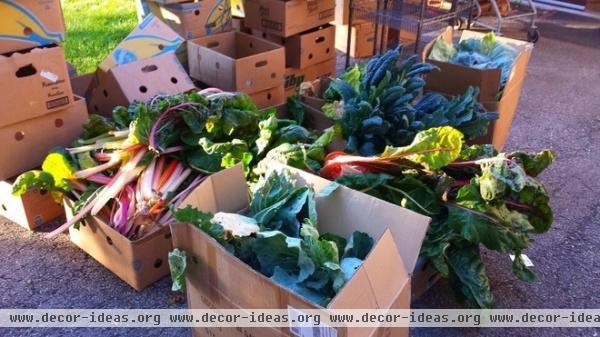
A public Facebook status update serves as a reminder that Coronado's garden isn't just for show:
"So excited!!! Just took a harvest over to the food pantry. Swiss chard, kale, and 8 cabbages that weighed 15 lbs each. More going over on Sunday. Woot!"
Houzz guides to edible gardens:
What to grow during the cool season
What to grow in summer












